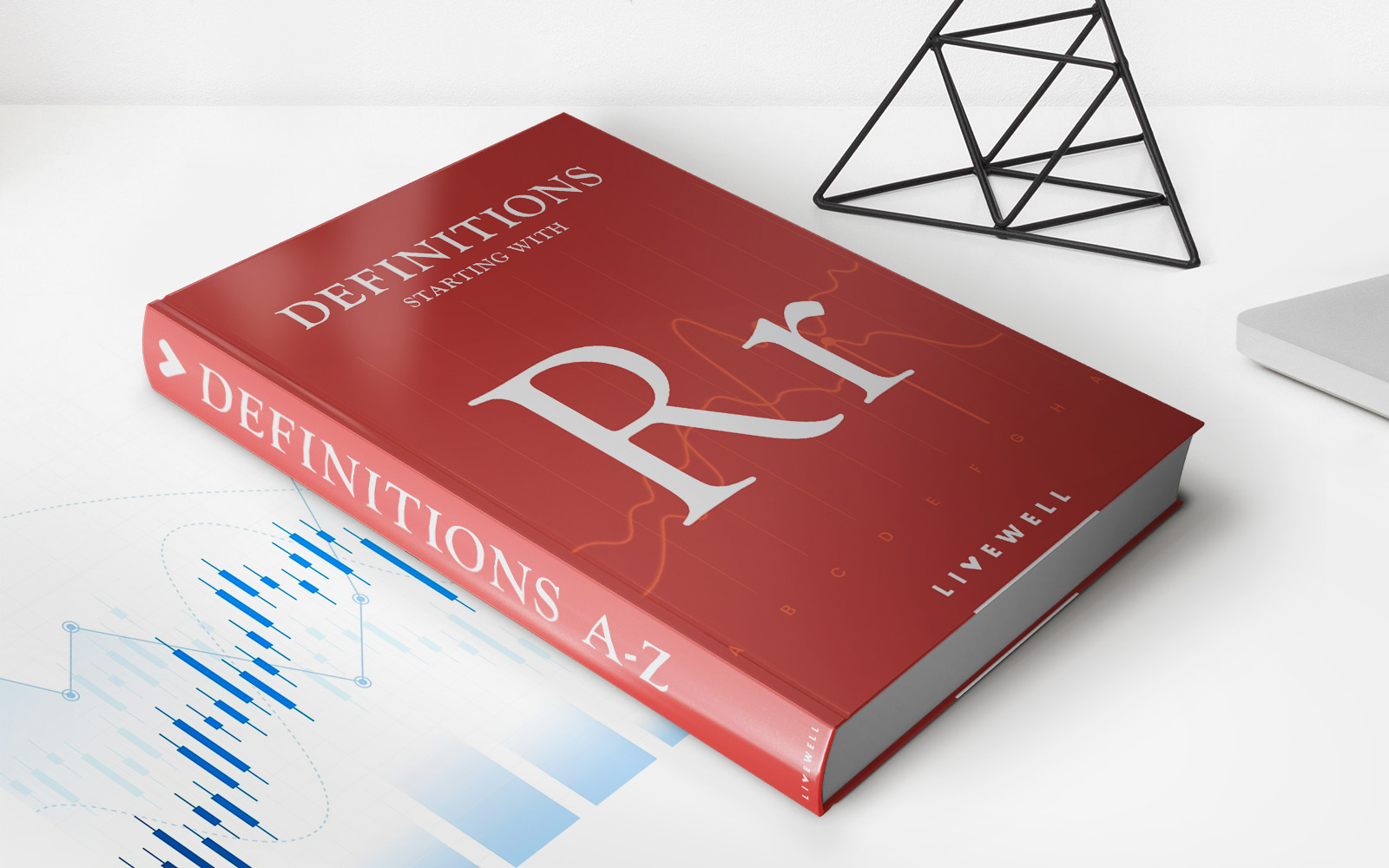

Finance
What Does Credit Analyst Do
Published: January 6, 2024
A credit analyst in the finance industry performs thorough evaluations of individuals' or businesses' financial standing to assess creditworthiness and potential risks.
(Many of the links in this article redirect to a specific reviewed product. Your purchase of these products through affiliate links helps to generate commission for LiveWell, at no extra cost. Learn more)
Table of Contents
- Introduction
- Role and Responsibilities of a Credit Analyst
- Assessing Creditworthiness of Borrowers
- Analyzing Financial Statements and Credit Reports
- Conducting Industry and Market Research
- Developing Credit Risk Strategies
- Presenting Findings and Recommendations to Management
- Collaborating with Other Departments and Stakeholders
- Continuously Monitoring and Managing Credit Portfolio
- Conclusion
Introduction
A credit analyst is a financial professional who plays a crucial role in assessing the creditworthiness of borrowers and managing the credit risk for financial institutions. Whether it’s a small business seeking a loan or a large corporation issuing bonds, credit analysts are responsible for conducting in-depth analysis to determine the borrower’s ability to repay their debt obligations.
With a deep understanding of finance and a keen eye for detail, credit analysts provide invaluable insights that help lenders make informed decisions when extending credit. They carefully evaluate financial statements, credit reports, industry trends, and market conditions to assess the likelihood of timely repayment.
Without the expertise of credit analysts, financial institutions would be exposed to significant risk and potential losses. By evaluating the creditworthiness of borrowers, credit analysts contribute to the stability of the financial industry and play a vital role in maintaining the overall health of the economy.
In this article, we will explore the role and responsibilities of a credit analyst in more detail. We will delve into the processes involved in assessing creditworthiness, analyzing financial statements and credit reports, conducting industry research, developing credit risk strategies, and managing credit portfolios. Understanding the importance of credit analysis will help you appreciate the critical role these professionals play in the finance industry.
Role and Responsibilities of a Credit Analyst
A credit analyst plays a vital role in the financial industry by evaluating the creditworthiness of individuals, businesses, and organizations seeking to borrow money. Their responsibilities encompass a wide range of tasks that involve assessing credit risk, analyzing financial data, conducting research, and providing recommendations to management. Let’s take a closer look at the key roles and responsibilities of a credit analyst:
- Credit Risk Assessment: One of the primary responsibilities of a credit analyst is to assess the credit risk associated with potential borrowers. They evaluate the borrower’s financial history, credit score, and repayment capacity to determine their ability to meet debt obligations.
- Financial Statement Analysis: Credit analysts carefully examine financial statements, including income statements, balance sheets, and cash flow statements. They analyze the financial health and stability of the borrower, looking for any red flags, such as declining revenue, high levels of debt, or inadequate cash reserves.
- Credit Report Evaluation: In addition to financial statements, credit analysts review credit reports to gain insights into the borrower’s credit history. They analyze factors such as credit utilization, payment history, and outstanding debts to assess the borrower’s creditworthiness accurately.
- Industry and Market Research: Credit analysts conduct thorough research on the borrower’s industry and market conditions to identify potential risks and opportunities. They analyze industry trends, competitive landscapes, and macroeconomic indicators that may impact the borrower’s ability to repay their debt.
- Credit Risk Strategies: Based on their analysis, credit analysts develop credit risk mitigation strategies. They recommend appropriate credit terms, loan structures, or risk mitigation techniques to minimize the potential for default or financial loss.
- Presenting Findings: Credit analysts are responsible for presenting their findings and recommendations to management or credit committees. They provide comprehensive reports and make compelling arguments to support their credit decisions.
- Collaborating with Stakeholders: Credit analysts work closely with various stakeholders, including loan officers, underwriters, and legal departments. They collaborate to assess creditworthiness, negotiate terms, and ensure compliance with internal policies and regulatory requirements.
- Credit Portfolio Management: Credit analysts continuously monitor and manage the credit portfolio to identify any changes in borrower’s financial health or market conditions. They may recommend modifications to existing credit lines or take proactive measures to mitigate potential risks.
Overall, credit analysts are instrumental in assessing and managing credit risks for financial institutions. Their ability to analyze complex financial data, conduct thorough research, and make informed credit decisions is vital to the success and stability of lending operations.
Assessing Creditworthiness of Borrowers
One of the primary responsibilities of a credit analyst is to assess the creditworthiness of borrowers. This involves evaluating the borrower’s ability to repay their debt obligations based on their financial history, creditworthiness, and other relevant factors. Let’s explore the key elements involved in assessing the creditworthiness of borrowers:
- Financial History: Credit analysts review a borrower’s financial history, including their income stability, employment history, and past borrowing behavior. They assess the borrower’s ability to generate sufficient income to cover their debt payments.
- Credit Score: Examining the borrower’s credit score is crucial in determining their creditworthiness. Credit analysts evaluate the borrower’s credit score and examine factors such as payment history, credit utilization, and credit history length to assess the borrower’s creditworthiness accurately.
- Debt-to-Income Ratio: Credit analysts analyze the borrower’s debt-to-income ratio, which compares their monthly debt obligations to their income. This ratio helps assess the borrower’s ability to manage additional debt and whether they can comfortably make their debt payments.
- Credit History: Credit analysts review the borrower’s credit history to evaluate their past borrowing behavior and payment patterns. They look for any red flags such as late payments, defaults, or bankruptcy filings that may indicate the borrower’s creditworthiness.
- Cash Flow: Assessing the borrower’s cash flow is critical to determine their ability to meet their debt obligations. Credit analysts analyze the borrower’s income and expenses to assess whether they have sufficient cash flow to repay their debts on time.
- Collateral: In some cases, credit analysts evaluate the collateral provided by the borrower to secure the loan. They assess the value and marketability of the collateral and its ability to cover the loan amount in the event of default.
By considering these factors, credit analysts develop a comprehensive view of the borrower’s creditworthiness. They evaluate the borrower’s ability to repay the debt, manage their existing obligations, and mitigate potential risks. This assessment is critical for financial institutions to make informed decisions regarding extending credit and managing credit risk.
It is important to note that the process of assessing creditworthiness may vary depending on the type and size of the loan, as well as the specific requirements and policies of the lending institution. However, the fundamental goal remains the same – to evaluate the borrower’s creditworthiness accurately and minimize the risk of default or financial loss.
Analyzing Financial Statements and Credit Reports
As a credit analyst, one of the key responsibilities is to analyze financial statements and credit reports to assess the creditworthiness of borrowers. This requires a thorough examination of the borrower’s financial data and credit history. Let’s delve into the process of analyzing financial statements and credit reports:
- Financial Statement Analysis: Credit analysts carefully review financial statements, including income statements, balance sheets, and cash flow statements. They analyze the financial performance and stability of the borrower, looking for patterns, trends, and indicators of financial health. This analysis helps in assessing the borrower’s ability to generate consistent income and manage their liabilities.
- Ratios and Metrics: Credit analysts calculate and evaluate various financial ratios and metrics derived from the financial statements. These ratios provide insights into the borrower’s liquidity, profitability, solvency, and efficiency. Common ratios include the debt-to-equity ratio, current ratio, and return on assets. The interpretation of these ratios helps assess the borrower’s financial strength and the potential risks associated with lending to them.
- Credit Report Evaluation: In addition to financial statements, credit analysts thoroughly examine credit reports obtained from credit bureaus. They assess the borrower’s credit history, including their payment history, outstanding debts, and any delinquencies or defaults. This evaluation provides crucial information about the borrower’s past credit behavior and their overall creditworthiness.
- Identifying Red Flags: Credit analysts scrutinize the financial statements and credit reports for any red flags or potential areas of concern. They look for signs of financial distress, such as declining revenues, increasing levels of debt, or significant fluctuations in profitability. These red flags can raise concerns about the borrower’s ability to repay their debt obligations.
- Comparative Analysis: Credit analysts often conduct comparative analysis by benchmarking the borrower’s financial performance against industry peers or relevant market standards. This analysis helps in understanding the borrower’s competitive position, identifying potential risks, and evaluating their financial performance in relation to industry trends.
- Qualitative Factors: In addition to the quantitative analysis of financial statements, credit analysts also consider qualitative factors. These may include understanding the borrower’s business model, industry dynamics, management team, and market reputation. These qualitative factors provide a broader perspective on the borrower’s overall creditworthiness.
By meticulously analyzing financial statements and credit reports, credit analysts gather valuable insights to assess the borrower’s financial health, creditworthiness, and risk profile. This analysis helps in making informed credit decisions, determining appropriate credit terms, and minimizing the potential for default or financial loss.
It is important for credit analysts to have a strong understanding of accounting principles, financial analysis techniques, and the ability to interpret complex financial data accurately. Their expertise in analyzing financial statements and credit reports is crucial for financial institutions in managing credit risk effectively and ensuring the overall stability of lending operations.
Conducting Industry and Market Research
As a credit analyst, conducting thorough industry and market research is an integral part of the job. This research provides valuable insights into industry trends, market conditions, and potential risks that may impact the creditworthiness of borrowers. Let’s delve into the process of conducting industry and market research:
- Industry Analysis: Credit analysts analyze the specific industry in which the borrower operates. They examine the industry’s overall performance, growth prospects, competitive landscape, and regulatory environment. This analysis helps assess the borrower’s position within their industry and the potential risks associated with industry-specific factors.
- Market Research: Credit analysts also conduct market research to understand the broader market conditions and dynamics. They examine factors such as supply and demand, market trends, customer behavior, and macroeconomic indicators. This research helps evaluate the borrower’s market opportunities and potential risks that may affect their ability to generate income and repay their loans.
- Competitor Analysis: Credit analysts assess the borrower’s competitors to gain insights into market share, product offerings, and competitive advantages. This analysis helps in understanding the borrower’s competitive position within the market and their ability to sustain and grow their business.
- Relevant Factors: In addition to industry analysis, credit analysts consider other relevant factors that may impact the borrower’s creditworthiness. This may include technological advancements, regulatory changes, environmental factors, or geopolitical events. By considering these factors, credit analysts gain a comprehensive understanding of the borrower’s operating environment and potential risks they may face.
- Projections and Forecasts: Credit analysts may develop projections and forecasts for the borrower’s industry and market. These forecasts provide insights into potential future risks and opportunities. By incorporating these projections, credit analysts can assess the borrower’s ability to navigate challenges and capitalize on market conditions.
- Monitoring Industry Trends: Credit analysts continue to monitor industry trends even after completing the initial analysis. They stay updated on changes in regulations, emerging technologies, or shifts in consumer behavior that may impact the borrower’s creditworthiness. This ongoing monitoring helps in addressing any evolving risks and adapting credit strategies accordingly.
By conducting comprehensive industry and market research, credit analysts gain valuable insights that allow them to make well-informed credit decisions. The analysis helps in assessing the borrower’s ability to thrive in their industry, identify potential risks, and make recommendations to mitigate these risks. It also helps in determining appropriate credit terms and conditions tailored to the specific industry and market conditions.
It is crucial for credit analysts to stay updated on industry trends, market dynamics, and relevant factors that may impact borrowers. This research is essential for effectively managing credit risk and minimizing the potential for default or financial loss.
Developing Credit Risk Strategies
Developing effective credit risk strategies is a critical responsibility of credit analysts. These strategies are designed to mitigate risk and ensure the financial institution’s overall credit portfolio remains healthy. Let’s explore the process of developing credit risk strategies:
- Evaluating Risk Appetite: Credit analysts assess the financial institution’s risk appetite, considering factors such as its capital position, regulatory requirements, and business objectives. This evaluation helps in determining the level of risk the institution is willing to accept and the risk tolerance for different types of borrowers.
- Establishing Risk Assessment Criteria: Credit analysts define risk assessment criteria based on the institution’s risk appetite and industry best practices. These criteria may include thresholds for credit scores, financial ratios, collateral, or industry-specific risk indicators. By establishing clear criteria, credit analysts provide a framework for assessing creditworthiness consistently.
- Creating Risk Rating Models: Credit analysts develop risk rating models to categorize borrowers based on their creditworthiness and risk profile. These models typically assign a numerical rating or score that helps in quantifying and comparing credit risk. The models consider various factors, such as financial ratios, credit history, industry risk, and market conditions.
- Defining Credit Terms and Conditions: Based on the risk assessment, credit analysts determine appropriate credit terms and conditions for different types of borrowers. This includes determining loan amounts, interest rates, repayment periods, and collateral requirements. The credit terms are tailored to balance the borrower’s needs and the institution’s risk management objectives.
- Implementing Credit Risk Mitigation Techniques: Credit analysts develop strategies to mitigate credit risk, such as requiring additional collateral, implementing financial covenants, or structuring loans with specific repayment provisions. These techniques help in reducing the potential for default and minimizing the financial institution’s exposure to risk.
- Monitoring and Reviewing Credit Portfolio: Credit analysts continuously monitor and review the credit portfolio to identify any changes in the risk profile of borrowers or market conditions. They assess the ongoing creditworthiness of borrowers, ensuring compliance with credit terms and conditions, and take timely action to mitigate risks.
- Collaboration with Stakeholders: Credit analysts collaborate with various stakeholders, including loan officers, underwriters, and risk managers. They work together to assess credit risk, share insights, and ensure cohesive risk management strategies are implemented across the organization.
By developing effective credit risk strategies, credit analysts help financial institutions proactively manage credit risk and ensure the stability of their loan portfolio. These strategies aim to strike a balance between extending credit to borrowers and mitigating potential risks, ultimately safeguarding the institution’s financial health.
It is important for credit analysts to stay updated on industry best practices, regulatory requirements, and emerging trends in credit risk management. This constant knowledge transfer ensures that the strategies developed are aligned with industry standards and evolving risk landscapes.
Presenting Findings and Recommendations to Management
As a credit analyst, presenting findings and recommendations to management is a crucial part of the role. The information and insights provided by credit analysts play a significant role in shaping the institution’s credit decisions and risk management strategies. Let’s explore the process of presenting findings and recommendations to management:
- Compilation of Analysis: Credit analysts compile their findings, including the assessment of creditworthiness, analysis of financial statements, evaluation of credit reports, and industry/market research. This comprehensive analysis forms the basis of their recommendations to management.
- Clear and Concise Reports: Credit analysts prepare clear and concise reports that highlight the key findings, risks, and recommendations. They organize the information in a structured and easily digestible format, ensuring that the reports are informative and accessible to management.
- Effective Communication: Credit analysts effectively communicate the analysis to management, ensuring that the key points are presented clearly and in a manner that aligns with the organization’s objectives and risk appetite. They use appropriate visual aids, such as charts and graphs, to illustrate trends, patterns, and comparisons.
- Synthesis of Complex Information: Credit analysts synthesize complex financial and industry-related information into concise and understandable summaries. They highlight the critical factors that management needs to consider when making credit decisions, minimizing jargon and technical terms that may be unfamiliar to non-financial professionals.
- Contextualizing Findings: Credit analysts provide the necessary context for their findings and recommendations. They explain the implications of the analysis in relation to the institution’s risk tolerance, regulatory requirements, and strategic objectives. By doing so, they enable management to make well-informed decisions.
- Supporting Arguments: Credit analysts support their findings and recommendations with data-driven arguments and evidence. They explain how each piece of information and analysis contributes to the overall assessment of creditworthiness and risk. This helps build credibility and assurance in their recommendations.
- Incorporating Risk-Reward Trade-offs: Credit analysts understand that credit decisions involve weighing potential risks against potential rewards. They present risk-reward trade-offs to management, outlining the potential benefits and potential downsides of different credit decisions. This allows management to make informed judgments based on a thorough understanding of the risks involved.
- Addressing Questions and Concerns: Credit analysts anticipate questions and concerns raised by management and are prepared to address them in their presentations. They provide clarifications, additional analysis, or alternative scenarios to support their recommendations and instill confidence in their findings.
By presenting findings and recommendations to management in a clear, concise, and convincing manner, credit analysts influence credit decisions, drive risk management strategies, and ensure the institution’s credit portfolio remains sound. Their presentations enable management to make informed choices that align with the organization’s objectives while managing and mitigating credit risks effectively.
It is essential for credit analysts to understand the preferences and expectations of management. Tailoring the presentation style and content to the specific audience helps ensure effective communication and decision-making.
Collaborating with Other Departments and Stakeholders
Collaboration is a crucial aspect of a credit analyst’s role, as they work closely with various departments and stakeholders within the financial institution. This collaboration is essential for accurate credit assessments, effective risk management, and informed credit decisions. Let’s delve into the importance of collaborating with other departments and stakeholders:
- Loan Officers and Underwriters: Credit analysts collaborate closely with loan officers and underwriters throughout the credit evaluation process. They work together to gather necessary information, discuss borrower details, and assess risk. This collaboration ensures a comprehensive understanding of the borrower’s creditworthiness and helps in making well-informed credit decisions.
- Risk Management Team: Credit analysts work hand in hand with the risk management team to ensure that credit risk is effectively managed within the institution. They collaborate on risk assessment methodologies, risk identification, and risk mitigation strategies. By sharing insights and knowledge, credit analysts help in maintaining a robust risk management framework.
- Legal and Compliance Departments: Collaboration with the legal and compliance departments is crucial to ensure that all credit decisions and processes adhere to regulatory requirements and internal policies. Credit analysts consult with these departments to ensure that credit terms and conditions are legally sound and comply with applicable regulations.
- Senior Management and Credit Committees: Credit analysts present their findings and recommendations to senior management and credit committees. They collaborate to ensure that credit decisions align with the institution’s strategic objectives, risk appetite, and financial goals. The insights provided by credit analysts guide management in making informed credit decisions.
- Business Development and Relationship Managers: Credit analysts collaborate with business development and relationship managers to assess potential borrowers. They provide expertise and insights to help identify creditworthy clients and determine appropriate credit terms. This collaboration helps strengthen relationships with clients and supports the institution’s growth objectives.
- External Auditors and Regulators: Collaboration with external auditors and regulators is crucial to ensure compliance and transparency. Credit analysts provide the necessary information and analysis to facilitate audits and regulatory examinations. They collaborate on sharing credit-related data and insights that help in meeting auditing and regulatory standards.
- Credit Bureaus and Data Providers: Credit analysts collaborate with credit bureaus and data providers to access credit reports and other relevant data. They ensure the accuracy and completeness of data used in credit assessments. Collaborating with these entities helps in obtaining crucial information for accurate credit evaluations.
By collaborating with various departments and stakeholders, credit analysts foster a culture of teamwork and knowledge sharing. This collaboration facilitates a holistic understanding of credit risk and ensures that credit decisions are well-informed, compliant, and aligned with the institution’s objectives.
Effective communication, active participation in cross-functional teams, and a willingness to share insights and expertise are crucial for successful collaboration as a credit analyst. This collaboration enhances the efficiency and effectiveness of credit assessment and risk management processes within the institution.
Continuously Monitoring and Managing Credit Portfolio
Continuous monitoring and management of the credit portfolio is a critical responsibility for credit analysts. This ongoing oversight ensures the health and performance of the portfolio, helps in identifying potential risks, and enables timely mitigation measures. Let’s explore the importance of continuously monitoring and managing the credit portfolio:
- Monitoring Borrowers’ Financial Health: Credit analysts continuously monitor the financial health of borrowers in the credit portfolio. They assess any changes in their financial performance, including revenue trends, profitability, and debt levels. This monitoring helps in detecting early warning signs of potential default or financial distress.
- Reviewing Compliance with Credit Terms: Credit analysts review borrowers’ compliance with credit terms and conditions. They ensure that borrowers meet their loan repayment obligations, maintain required collateral, and adhere to any financial covenants. This review enables timely identification of any instances of non-compliance and facilitates appropriate action.
- Updating Risk Ratings: Based on ongoing monitoring and analysis, credit analysts update risk ratings as required. They reassess the creditworthiness of borrowers and adjust risk ratings to reflect any changes in their financial condition or market dynamics. These updates help in maintaining an accurate risk profile of the portfolio.
- Identifying and Assessing New Risks: Credit analysts continuously identify and assess new risks that may emerge within the credit portfolio. This includes evaluating the impact of economic fluctuations, changes in industry dynamics, or regulatory shifts that may affect borrowers’ creditworthiness. By identifying and assessing these risks, credit analysts can proactively manage them.
- Implementing Risk Mitigation Measures: Credit analysts work with the relevant stakeholders to implement risk mitigation measures for borrowers exhibiting higher risk profiles. They may recommend adjustments to credit terms, additional collateral requirements, or restructuring of debt to mitigate potential risks. These measures help in protecting the institution from potential defaults or financial losses.
- Reporting and Communication: Credit analysts regularly communicate the performance and status of the credit portfolio to senior management and relevant stakeholders. They provide reports on the portfolio’s credit quality, exposure to risks, and any planned or implemented risk mitigation strategies. This reporting facilitates informed decision-making and keeps all parties updated on the portfolio’s health.
- Adapting Strategies: Continuous monitoring allows credit analysts to identify trends and patterns within the credit portfolio. By analyzing this data, they can determine if there is a need to adapt credit risk strategies, adjust risk thresholds, or update risk assessment methodologies. This adaptability ensures that credit management strategies remain effective and aligned with changing market conditions.
Continuous monitoring and management of the credit portfolio enable credit analysts to proactively manage risks and take timely action to mitigate any potential issues. By staying vigilant and adaptable, credit analysts contribute to maintaining the overall health and performance of the credit portfolio.
Utilizing data analytics tools, staying updated on industry trends, and actively engaging with stakeholders are crucial for effectively monitoring and managing the credit portfolio. The insights gained through continuous monitoring help in making informed decisions and safeguarding the institution’s financial well-being.
Conclusion
Credit analysts play a crucial role in the finance industry by assessing the creditworthiness of borrowers and managing credit risk for financial institutions. Their expertise in analyzing financial statements, evaluating credit reports, conducting industry research, and developing credit risk strategies is vital for making informed credit decisions and ensuring the overall health of the credit portfolio.
Through the process of assessing creditworthiness, credit analysts carefully evaluate borrowers’ financial history, credit scores, debt-to-income ratios, and credit reports. This analysis helps in determining the borrower’s ability to repay their debts and manage financial obligations.
In addition to credit assessments, credit analysts conduct in-depth industry and market research. They analyze industry trends, competitive landscapes, and macroeconomic indicators to identify potential risks and opportunities that may impact borrowers’ creditworthiness.
Based on their analysis, credit analysts develop credit risk strategies that align with the institution’s risk appetite and regulatory requirements. These strategies aim to minimize credit risk by determining appropriate credit terms, implementing risk mitigation techniques, and continuously monitoring the credit portfolio.
Collaboration is a key aspect of the credit analyst role, as they work closely with loan officers, underwriters, risk management teams, legal departments, and other stakeholders. This collaboration ensures a comprehensive understanding of borrowers’ creditworthiness and facilitates well-informed credit decisions.
Continuous monitoring and management of the credit portfolio is imperative for credit analysts. They regularly review the financial health of borrowers, assess compliance with credit terms, update risk ratings, and implement risk mitigation measures when necessary. This ongoing oversight helps in identifying potential risks and taking proactive measures to mitigate them.
In conclusion, credit analysts are instrumental in maintaining the stability and soundness of the financial industry. Their expertise in assessing creditworthiness, analyzing financial data, conducting industry research, and collaborating with stakeholders ensures well-informed credit decisions and effective risk management. By applying their knowledge and skills, credit analysts contribute to the success of financial institutions and the overall health of the economy.














